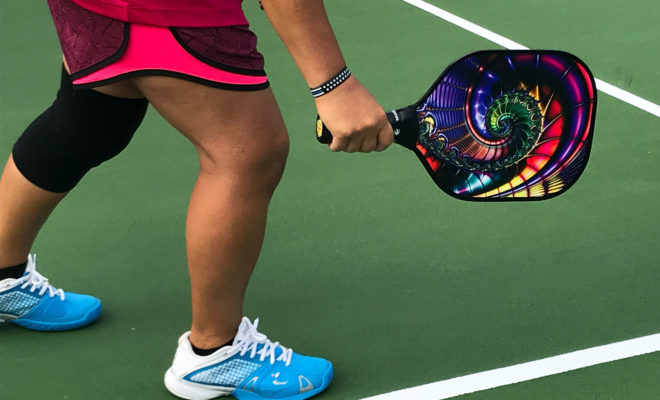
Feature
Pickleball, Anyone?
A Beginner’s Adventures in the “Exploding Sport”
By Sylvia Whitman | July/August 2021
Even before the pandemic, I was looking for a game in Sarasota.
Squash, the love of my New England youth? The Bath and Racquet Club had a court, I heard, but membership was a barrier, and then the facility closed for reinvention.
Tennis? Public courts abound, but I didn’t have partners.
I joined a gym and watched old episodes of Law & Order as I pedaled the elliptical, but then COVID put that off limits. So, I hoofed it through the long lockdown months.
During that time, I noticed two things. One, no matter how lovely the birds and the trees, all walk and no play makes exercise a dull ploy. Two, as soon as people began congregating again, parks filled with pickleball players, recognizable by their boxy paddles and neon wiffle-like balls. Was I missing something?
Go find out, my editor said.
First Stop: The US Pickleball Open Championships in Naples
I hadn’t intended to start with the pros, but my brother invited me to preview day for one of pickleball’s biggest tournaments, held every April at East Naples Community Park.
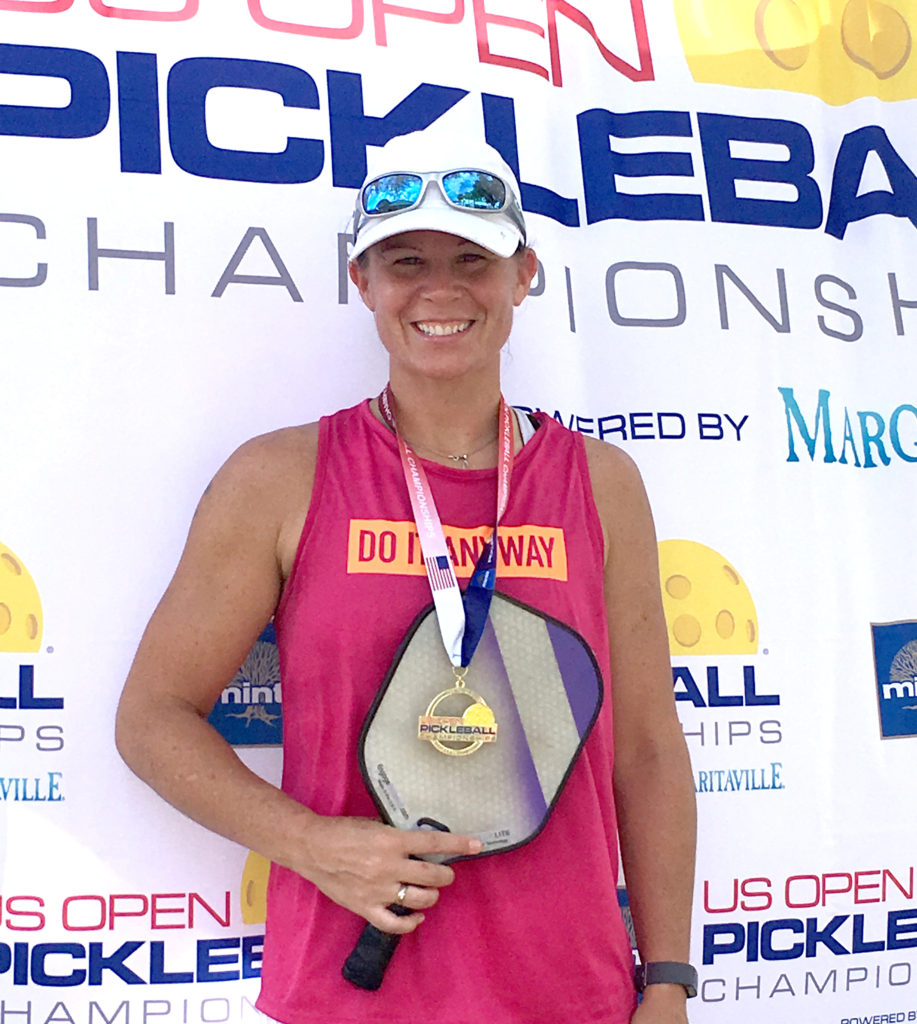
Really, a world-class event in a public park?
Only later did I come to appreciate the Naples facility—64 dedicated outdoor pickleball courts in one spot, with others inside and outside around town. With a population more than twice as large, Sarasota has indoor and 54 outdoor courts sprinkled among parks, but most squat on tennis turf. Hence the many asterisks on the county website: *Bring your own net.
Preview day at the Open meant my brother didn’t have to pay for parking, but we also didn’t see any official games, just some serious warming up and amateur play. But vendors were setting up tables, so we buttonholed Traver West of superstore PickleballCentral.com to give us an orientation.
History. Three dads near Seattle, Washington, invented pickleball in the summer of 1965 for their bored kids. Since no one anticipated the game’s stunning trajectory, early history remains a bit fuzzy. No condiments here: The game’s named for either a ball-chasing dog or a ragtag crew boat, according to USA Pickleball, the sport’s governing body.
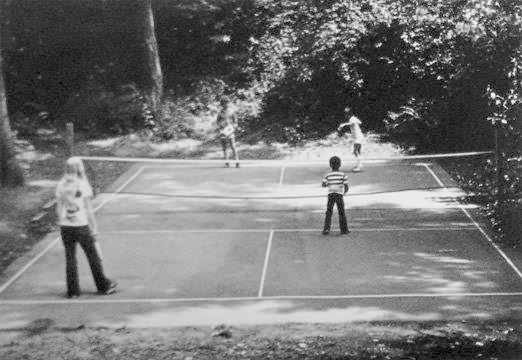
Specs. Think life-size ping-pong on a badminton court. The net reaches 34 inches in the center, just two inches shorter than tennis height. To keep players from parking at the net and smashing the ball into each other, the dads created a no-volley zone on either side called “the kitchen.”
Equipment. Sizing up from ping-pong, the originators cut double-size paddles out of plywood, until a Boeing engineer raided the company scrap heap. That resin-dipped cardboard material called Nomex, used in plane floors and walls, evolved into today’s polypropylene honeycomb core composite paddles.
Rules. One size court and rules fit both singles and far more popular doubles. Sides score only when serving. First to reach 11 (by at least two points) wins.
Popularity. The sport radiated across North America, and then the world. Apparel and equipment suppliers followed. In 2005, USA Pickleball incorporated, sanctioning official rules and tournaments. Naples hosted the first US Open Pickleball Championships in 2016.
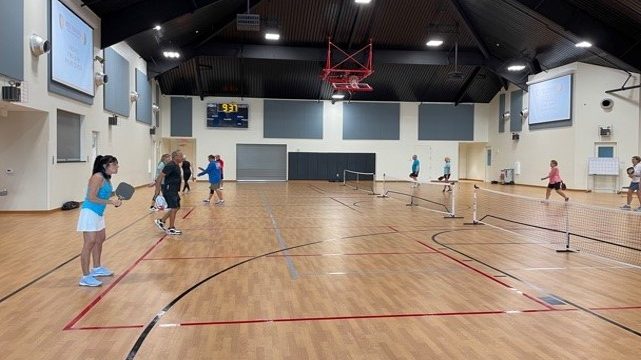
“Pickleball is the fastest growing sport in the country,” said West. The independent Sports & Fitness Industry Association (SFIA) estimates that more than 3.46 million Americans are playing pickleball, with a growth rate of 21% between 2019 and 2020. West ticked off the game’s virtues: inexpensive, easy to learn, coed and multigenerational, less physically taxing than other racquet sports.
“I’ve heard pickleball called the orthopedist’s dream,” observed my skeptical tennis-playing brother.
West conceded that he doesn’t know the ins and outs of injury rates on the hard indoor and outdoor courts. But he finds pickleballers a happy bunch. “Rarely will you find a jerk player,” he said.
Touché.
Let the games begin.
Step 1: Google
“Pickleball Sarasota” yielded pages of results, starting with the county page listing public courts. Next, I landed on Sarasota Pickleball Organization, LLC (sarasotapickleball.com), home of “Pickleball Terry,” where I signed up for a weekly newsletter.
It arrived in my email as scheduled. Punctuated by photos, videos, ads, and memes (George Washington, mounted on a horse, holds a pickleball paddle under the banner WHAT MAKES THIS COUNTRY GREAT!), the blast gave an incredibly helpful rundown of the county’s indoor and outdoor state of play: drop-in times for intermediate to advanced players at Colonial Oaks, a temporary closure at the Venice Community Center for floor work, and yes—beginner lessons!

Step 2: Get a Paddle in Hand
Although Amazon and Walmart advertised paddles galore, I needed one pronto for the 8:30 am beginner session at the Potter Park Y. Plus, I needed guidance. My Google search led me to a local equipment store, Pickleball Sarasota (pickleballsarasota.com).
Ah, gear. Balls, bags, shoes, paddles. I studied the tags. “How come this one is so much cheaper?” I asked. Turns out that was the price of a grip.
I mentioned I was testing the waters. Proprietor Joe Capuano led me to his pegboard of loaner paddles and handed me two, one composite and one graphite, which he described as closer to a wooden bat—or, in tennis terms, a more tightly strung racquet. He wrote my contact info in his log and told me to bring back the paddles in a couple of days. “Tell me what you think.”
Step 3: Take a Lesson
Although the Y charges nonmembers $7 to drop in, the first visit/lesson is complimentary. So far, so free!
Bob, the volunteer instructor, directed the handful of us to assemble three nets and position them across the gym floor. Eeny-meeny—I picked the composite paddle since Joe said that’s the choice of about 80% of players. Everyone else in the beginner session had played before, so Bob hit me a few balls, which, with such a high proportion of plastic, don’t rebound like tennis ones. Then he sent me into an empty racquetball court to hit against the wall and get a feel for the bounce.
Next, he demonstrated the underhand serve and put me in a game with him and a married couple.
Beginning is humbling. But I had enough tennis to clear the net a few times and enough hubris (at least 50 miles of steps a week!) to race after balls.
As I changed direction, I felt a tiny crunch in my ankle. The orthopedist’s dream indeed.
In the most encouraging way, Bob told me I wasn’t ready yet to join the last 15 minutes of game play but urged me to come back.
Step 4: Go Back a Step or Two to Stretch and Think about Shoes
By that afternoon, I was lying on the couch administering RICE to my swollen ankle—rest, ice, compression, and elevation. After a melodramatic 24 hours, I could walk fine, but fortunately travel kept me off the court for about 10 days.
Which gave me time to buy a discounted pair of Adidas Grand Court sneakers on Amazon. Made for front to back transitions, tennis shoes don’t offer as much support for lateral movement on hard surfaces as specialized pickleball shoes, I learned from Joe, but they beat running shoes.
Step 5: Take Another Lesson
Returning and re-borrowing paddles, I bopped in and out of Pickleball Sarasota several times. Joe recommended the program at Church of the Palms on Bee Ridge—$3 a session, eye protection required.
Really, pickleball at a church?
Not in the sanctuary, of course. According to Susan Neisler, the church’s health and well-being director, the mission behind building the multipurpose Palms Center a few years ago was “to make an opening space for the community … and then once they’re here, [they] see all the amazing things that our church offers.” So, Church of the Palms hosts pickleballers twice a week, a slide show of the church’s many activities and good works playing on a large screen above three pickleball courts set up in the gym.
I managed to catch the last beginner’s lesson before summer. Come June, kids’ camps commandeer most of the gyms across the county, making indoor (air-conditioned) pickleball harder to find in the hot and rainy season. I joined a line of about a dozen senior-ish people on the beginner court. One volunteer was lobbing gently over the kitchen, and each of us in turn practiced volleying. With the graphite paddle this time, I enjoyed a little smashing success, the vibration radiating up my arm. But in pickleball, power ranks behind placement, especially the infamous “dink,” a drop shot into your opponents’ kitchen.
“If you can serve well and you can dink well, you will do well,” I had overheard Joe tell a shopper.
I marveled at the generosity of the courtside volunteers. With an upbeat patter, Ken rotated us through a game, urging do-overs after service faults, coaching us on pickleball’s persnickety score calling. Certified coach Tom Everitt, president of the Sarasota Pickleball Club, accompanied a couple of his students, and after Ken’s lesson, he showed several of us neophytes how to join open play. Then he stuck around to guide us through our game.
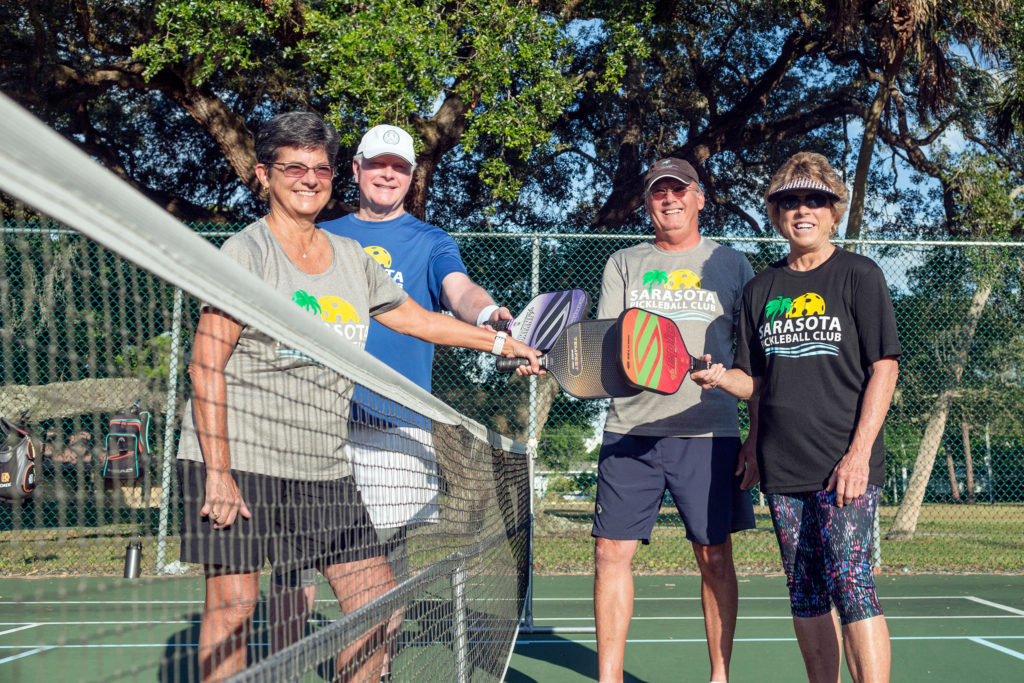
Step 6: Play, Play, Play
Talk to pickleballers, and the word addicting surfaces often.
I bought a composite paddle from Joe and returned to Church of the Palms for summer open play. One-off games and constant remixing of foursomes creates the sport’s famed sociability: You write your name in a box on the whiteboard, hang and chat on the sidelines, and play with your boxmates when the next court opens. After that game, you can sign up again.
Beginning is a stage, not a moment; I’m still cringing as I try to embrace my inner klutz. Not everyone has as much patience for newbies as the designated volunteers, but on the whole, the pickleball community seems strikingly invested in growing the fold. Like Sarasota itself, pickleball is full of people who came from someplace else and started fresh. “You’ve just got to play,” everyone says.
And get more instruction. I hear Pickleball Terry teaches a clinic at the Y on Bahia Vista. More lessons will return in the fall, though not necessarily at times convenient for working folks. But taking up pickleball is a long-term project, and the start-up costs have been reasonable (around $100). The important thing is, Game on.
A Few of the Key Players on the Sarasota Pickleball Scene

“Pickleball Terry,” aka certified coach Terry Ryan, was working out at the Potter Park Y about four years ago when she spotted “these people in the gym getting this plastic ball over the net and all having a great time and smiling.” She asked them what they were playing, and they handed her a paddle and invited her to try it out. “That was it. I was hooked.” Her past experiences as a competitive racquetball player and a professional marketer fused.
Ryan credits pickleball’s “wonderful social aspect” for its wildfire spread. “You don’t have to get three other people to play with; you can just drop in and pick up a game.” She mentions a traveling nurse who plays wherever she’s working: “She has instant friends, and a social life, a sense of community.”
That and exercise. Terry says pickleball has a bit of a reputation as a senior sport, “but now the younger people are catching up.” According to USA Pickleball, the average age for (regular) Core players is 51.5 and Casual players 35.5. “What’s great is you put a 30-year-old and a 60-year-old on the same court, and they can easily play together,” says Ryan. “Same for men and women.”
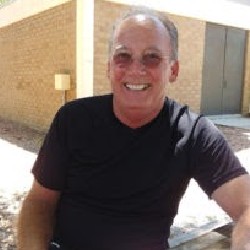
As president of the nonprofit Sarasota Pickleball Club (SPC), Tom Everitt serves as the game’s local ambassador and gadfly. He buzzes around municipal offices pressing for designated public pickleball courts—with nets and clear lines that don’t crisscross with basketball, volleyball, and/or tennis. He gets a lot of promises. The county has budgeted for six designated courts at Longwood Run Park, but construction is running behind schedule. With the Legacy Trail extension on the fast track, he’s pinned some hopes on new courts near the Pompano trailhead, by the fairgrounds. Bathrooms and lighting for the trail could do double duty for pickleball players.
Everitt took up pickleball at the Y, played in Connecticut, joined with Carrie Palmer and Cathy Denault and others to help launch the SPC in 2017. Nothing against private pickleball in gated developments and the like, but Everitt promotes the public option, which eventually will draw younger and more diverse players to the sport. The SPC pitched pickleball to Church of the Palms; the club has a stake in welcoming newcomers to the sport and keeping the pickleball community focused rather than fractured. Before the pandemic, “there were times when we had 30 or 40 beginners in class,” says Everitt.

Retired physician and former Texan Darrel Jordan oversees “pickleball operations” at Church of the Palms while his wife, Karen, a retired school principal, often staffs the lobby desk, making sure first-timers sign waivers. As congregants, they volunteer in multiple church outreach activities, but they play as well as facilitate pickleball. “My husband and I thought it’d be fun to play together,” says Karen. “It’s a wonderful social sport, and it’s an adaptive sport, which means that you can play as you age.”
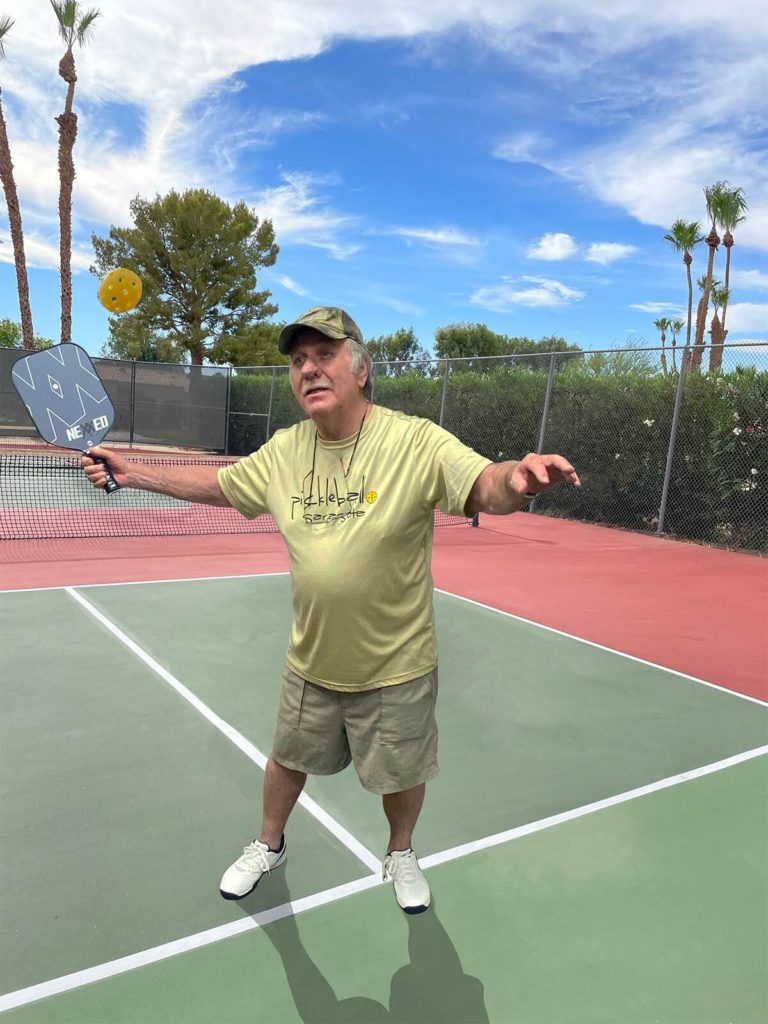
When Joe Capuano retired from a career as an NFL merchandise distributor, he took up pickleball—and soon discovered 1) retirement bored him and 2) almost no one was selling pickleball equipment from a brick-and-mortar shop. Three weeks later he opened Pickleball Sarasota, one of only four “100% dedicated pickleball stores in the state of Florida.” (The others are in Naples, Jacksonville, and the Villages.)
Interested in the growth of the sport on all fronts, Capuano has joined with a developer on a grand vision: The Pickleball Club (https://www.thepickleballclub.us/), a membership-only club with reservation-secured indoor courts, a pro and pro shop, juice bar, and the like. Stay tuned.


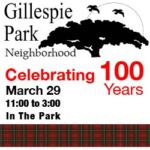

You must be logged in to post a comment Login